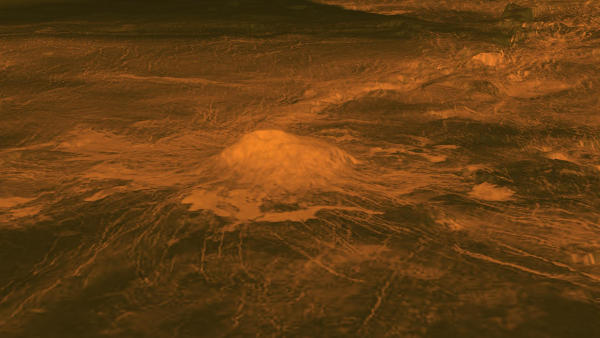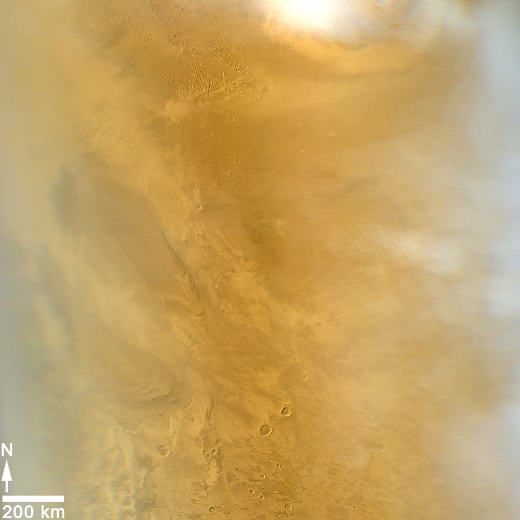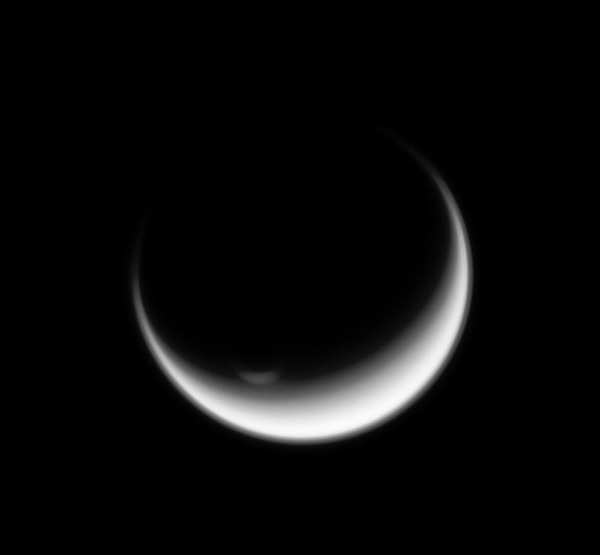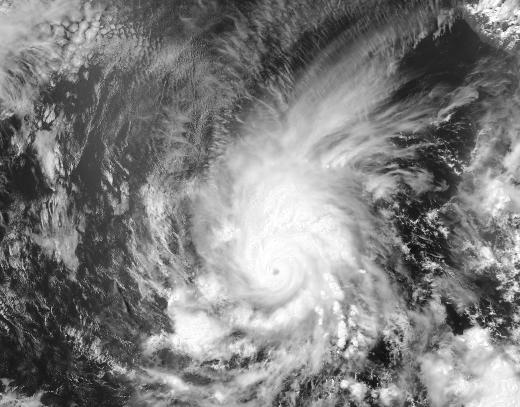
The Idunn Mons volcano was photographed by the European Space Agency’s (ESA) Venus Express spacecraft mission. This volcanic peak is about 200 km across and sits at 46 degrees south latitude, 214.5 degrees east longitude in the Imdr Regio area of Venus. The reddish-orange portion near the center of the image represents the warmest area which is centered on the summit and stands about 2.5 kilometers (1.6 miles) above the plains.



